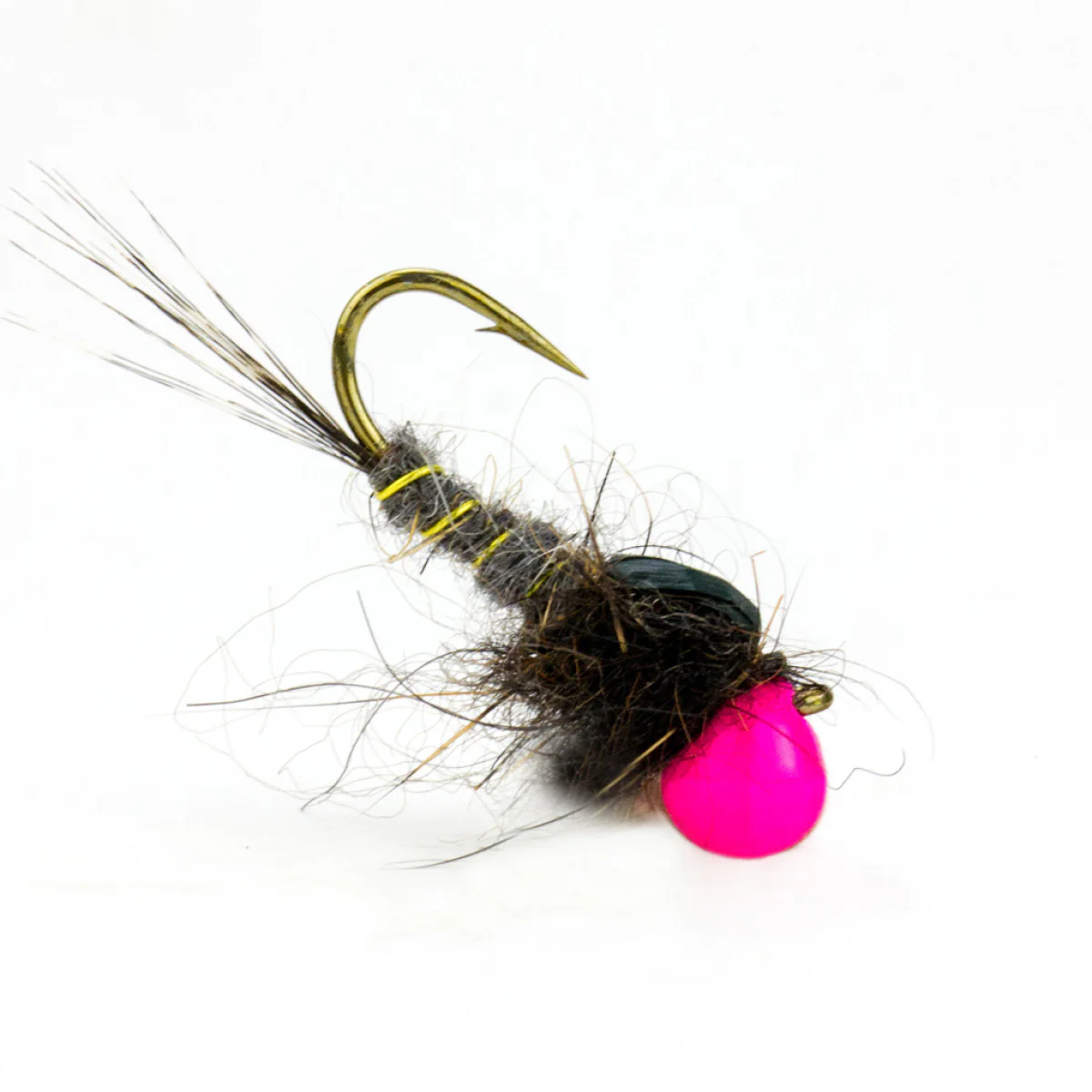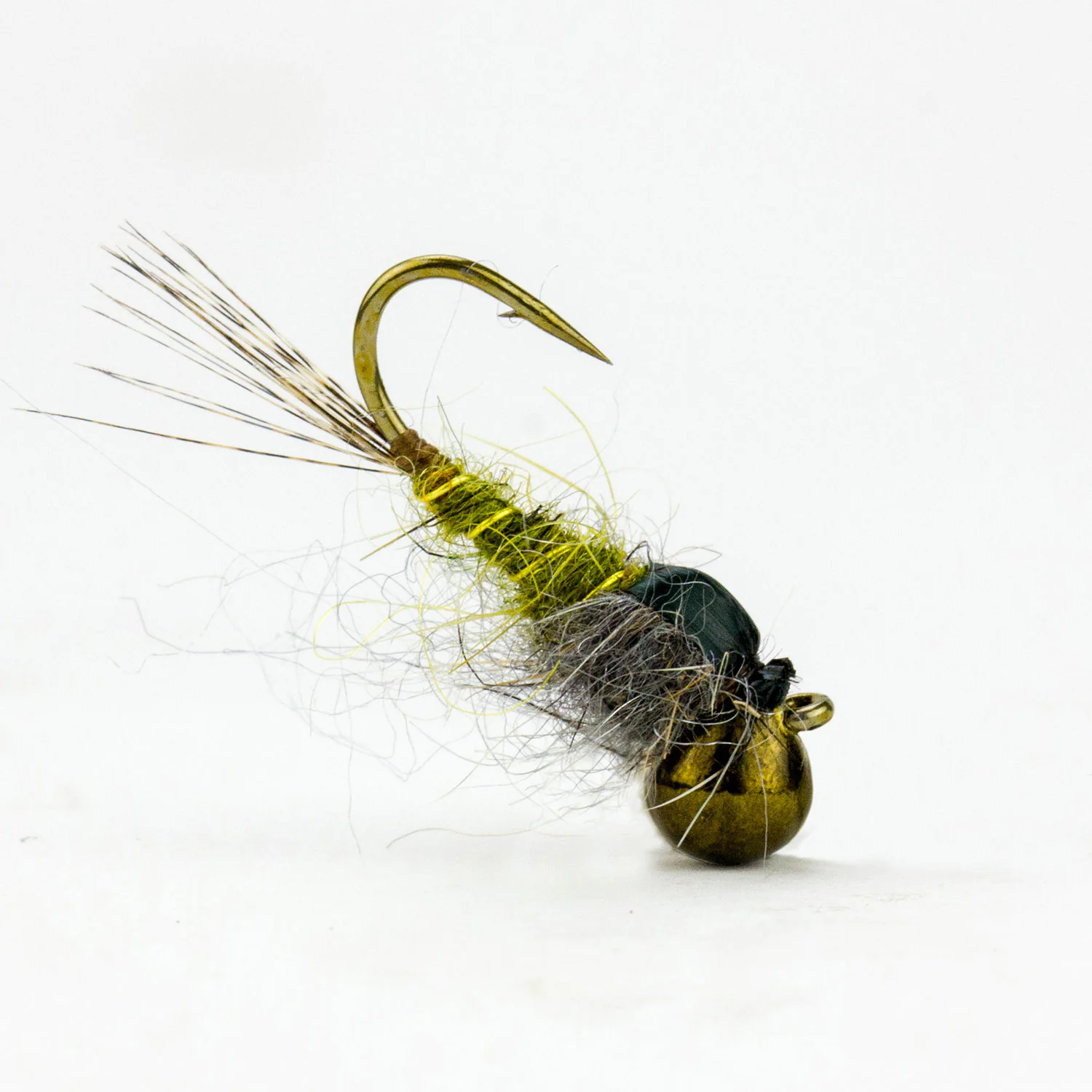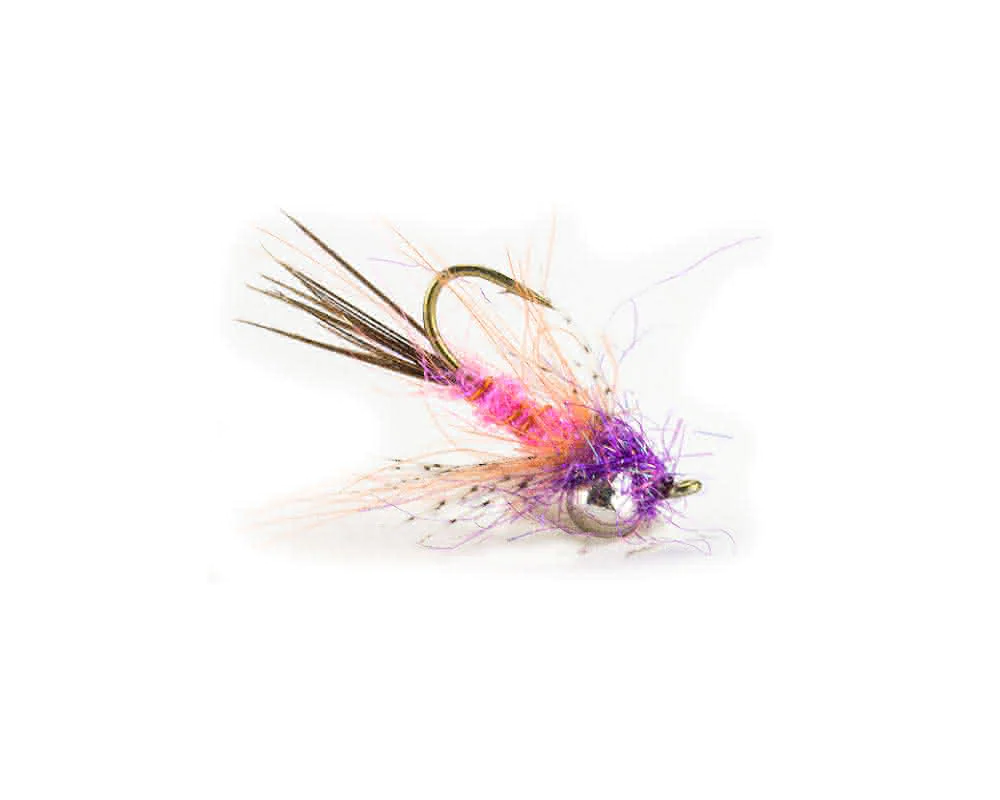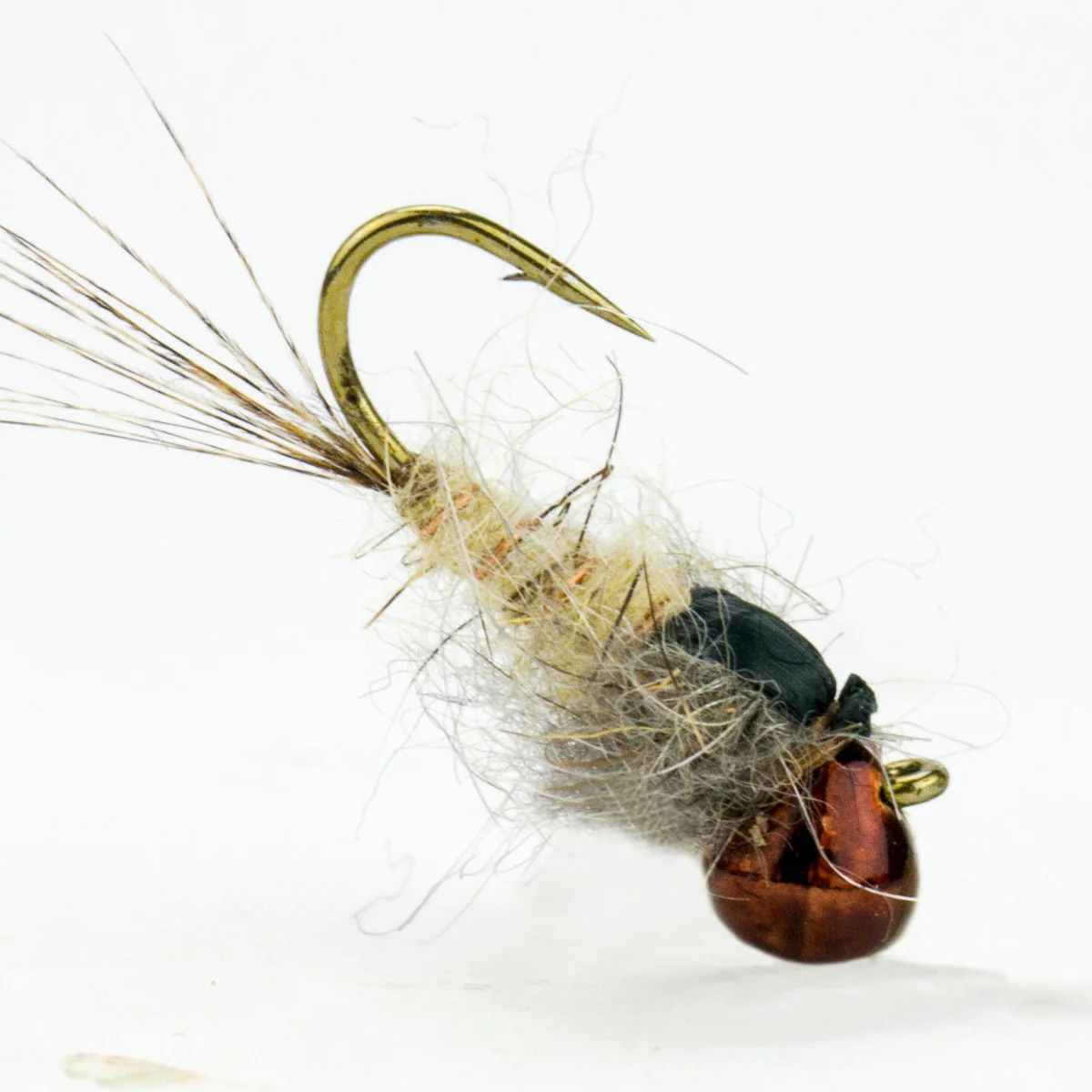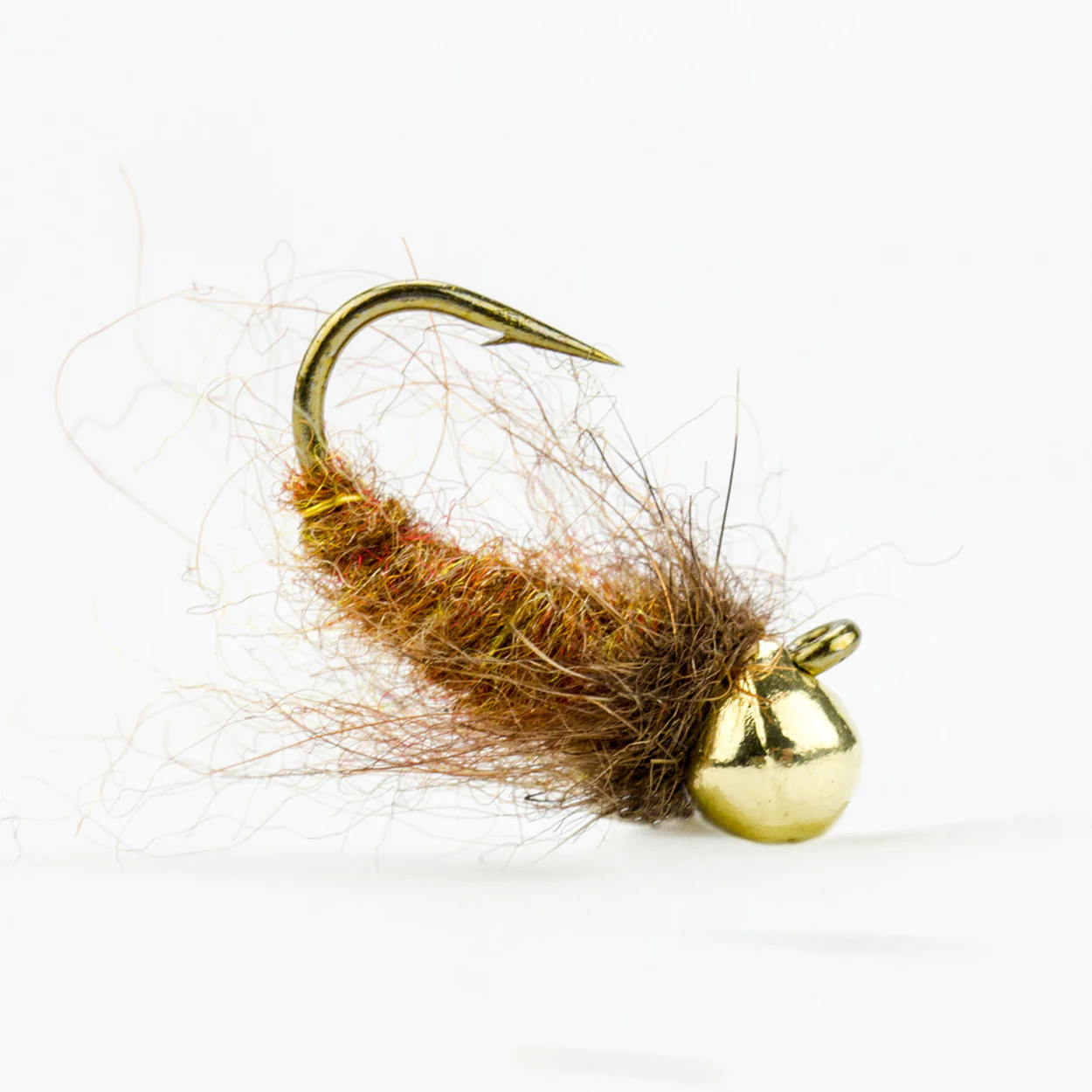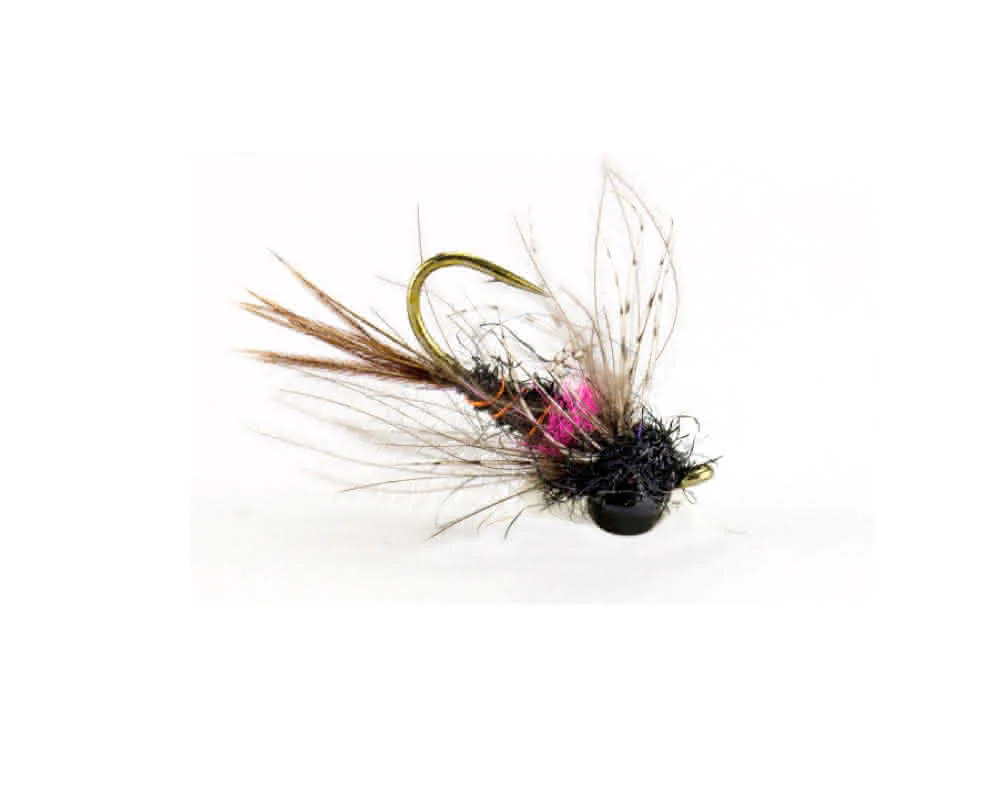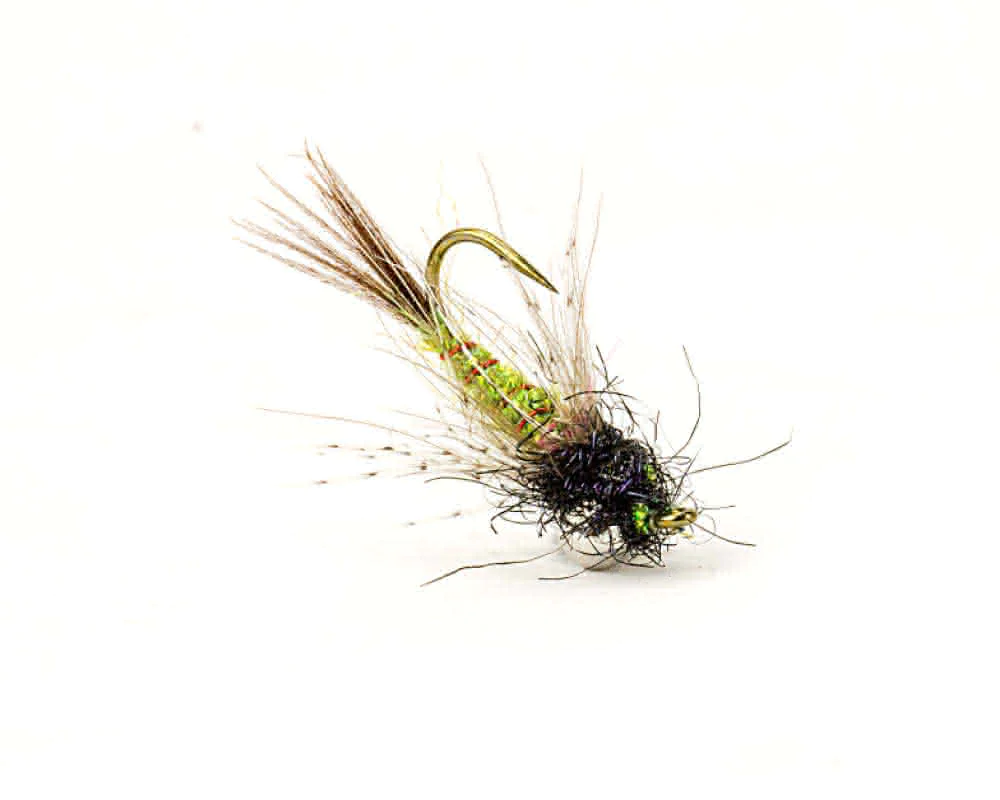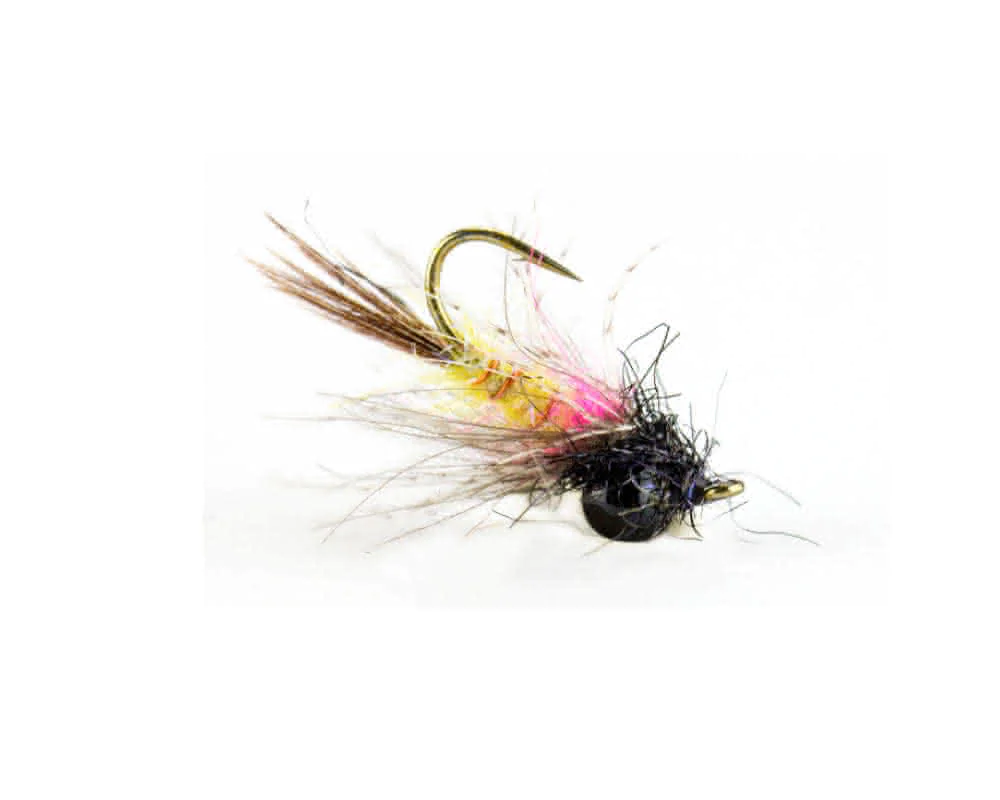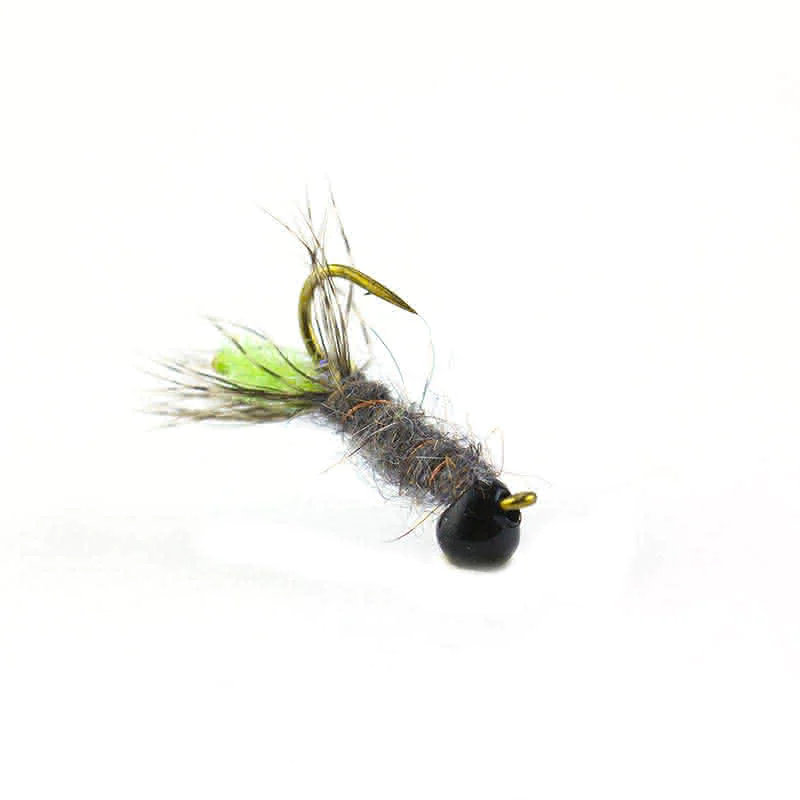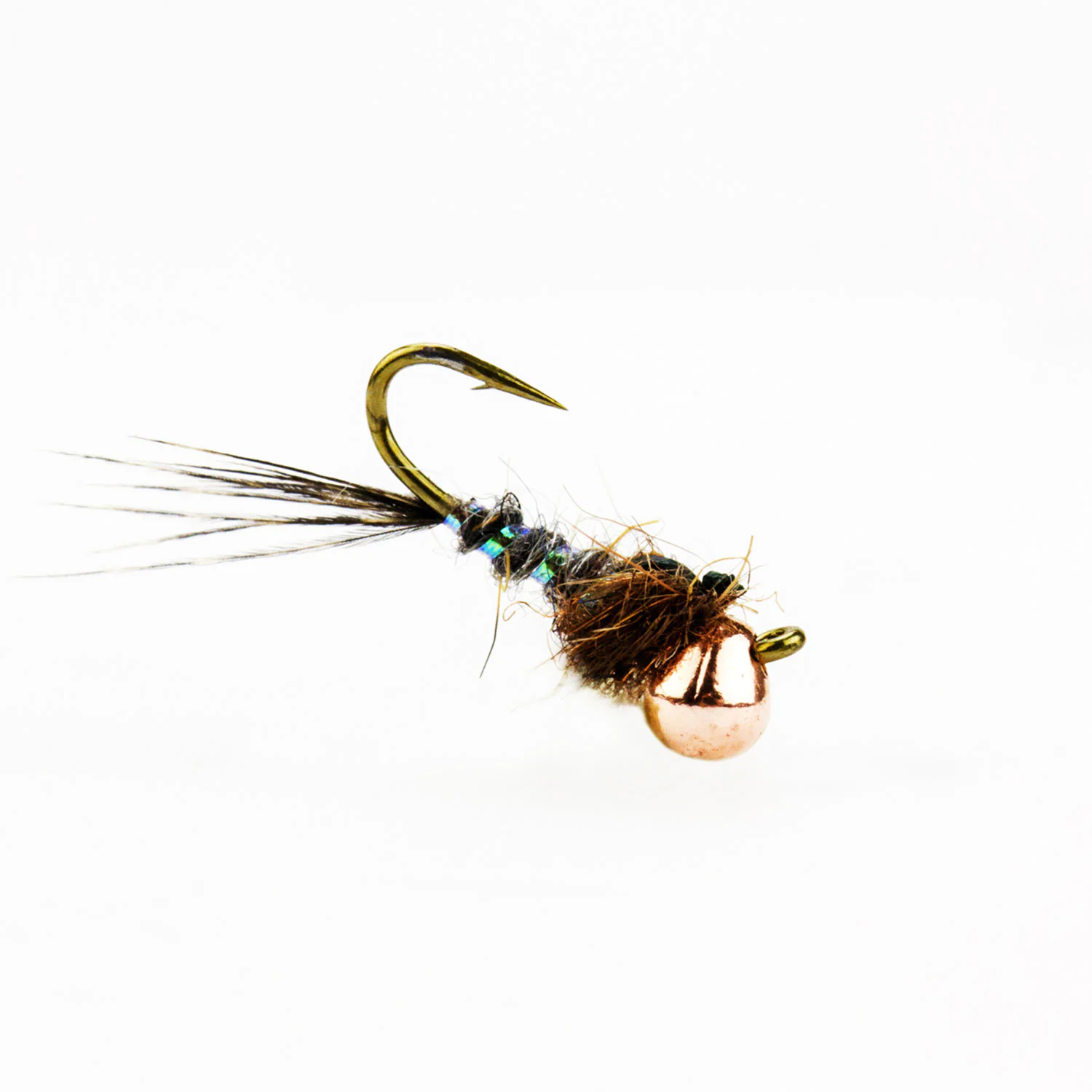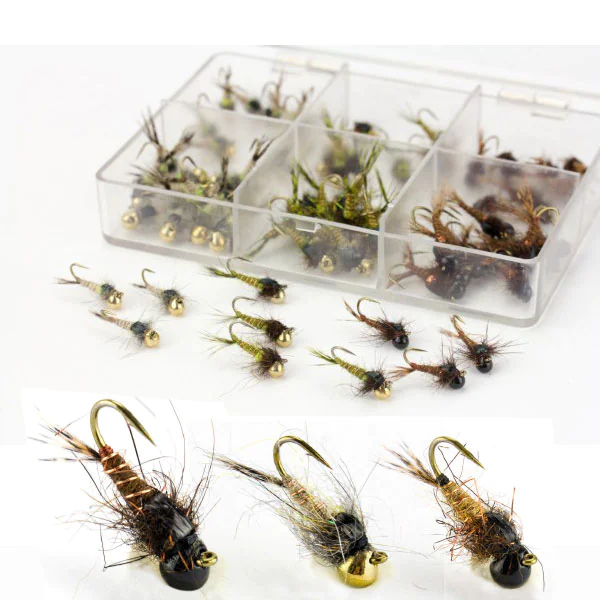- FLY RODS
- FLY REELS
- FLY LINES
- FLIES
- CLOTHING
- ACCESSORIES
- NEW Products
- SALE %
- WATERS
- COURSES
- TRAVELLING
-
FISHING WORLD
-
Fly Fishing
- Angeln mit Streamer
- Interview Gerhard Laible
- Fly Fishing for Beginners
- Flyfishers from foreign countries
- Fly Fishing in Autumn
- Fly Fishing for Grayling
- The right leader for fly fishing
- Wathose Kaufberatung
- RIO Trout Fly Lines
- Season Start - Tackle Check
- Fly Fishing for Hucho
- RIO SlickCast & ConnectCore Plus
- Fly Fishing for Carp
- Fly Fishing with Mayflies
- Fly Rod for Sea Trout
- SAGE R8 Technology
- Fly Fishing for Pike
- Czech Nymphing
- Trout Spey Fly Fishing
-
Advantages of Trout Trap Nymphs
- Fly Fishing in Saltwater
- Fly Fishing for Bonefish
- Accessories Recommendations
- HANAK Competition
- Fly Fishing for Trout with Hopper Flies
- Fly Tying
- VIDEOS
-
Fly Fishing
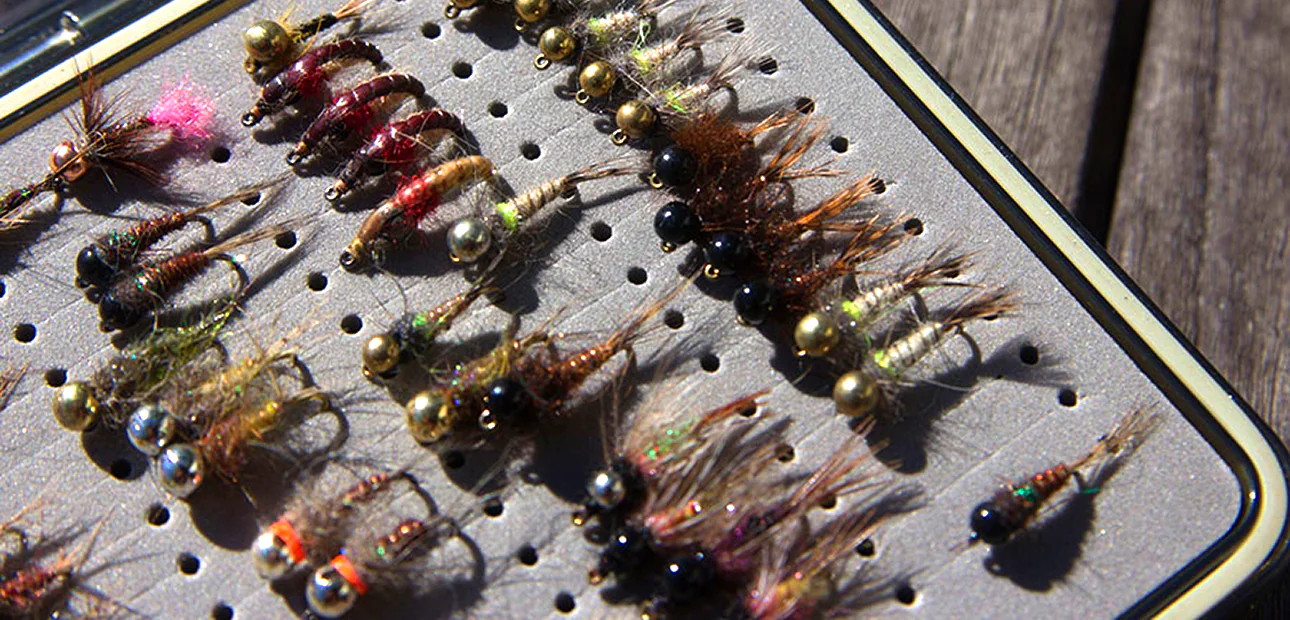
Advantages of Trout Trap Nymphs
Why are Trout Trap Nymphs so successful?
Basically, when fly fishing with weighted nymphs, it may be very important to present the nymph near the bottom. On many days the trout and grayling simply do not take if a nymph that is not offered near the bottom. It is easy to forget that a trout consumes about 80% of its nourishment in the form of nymphs below the surface.
Thus, it is not surprising that nymph fishing is widespread and the use of tungsten beards has found many fans worldwide in fly fishing over the past 15 years. Here you can combine a high weight with a small mass. Parts of the modern nymph fishing were almost revolutionized by this material and new ways of fishing was made possible.
The fact is that Tungsten has the highest specific weight of fly tying materials on the market today. The specific gravity of Tungsten is 19.25 g / cm³. It is one of the world's heaviest metals. Manufacturing processes are so advanced today that Tungsten can be produced in a wide variety of shapes and colors.
Numbers of specific weights for binding materials in comparison:
Brass (gold-headed beads): 8.1 g / cm³
Copper: 8.9 g / cm³
Lead: 11.34 g / cc
Tungsten (Wolfram): 19.25 g / cc
Before the invention of Tungsten beads weighted nymphs were often equipped with larger and therefore heavy brass beads or with a thicker lead wire. Often these patterns were then very large and didn´t get to the bottom due to their voluminous body despite the higher weight.
With the use of tungsten beads, this situation changed fundamentally, as it was quickly recognized that a specific high weight can be applied to relatively small and sparsely bound flies. Nevertheless, the form of a nymph still has a great influence on its sinking behavior.
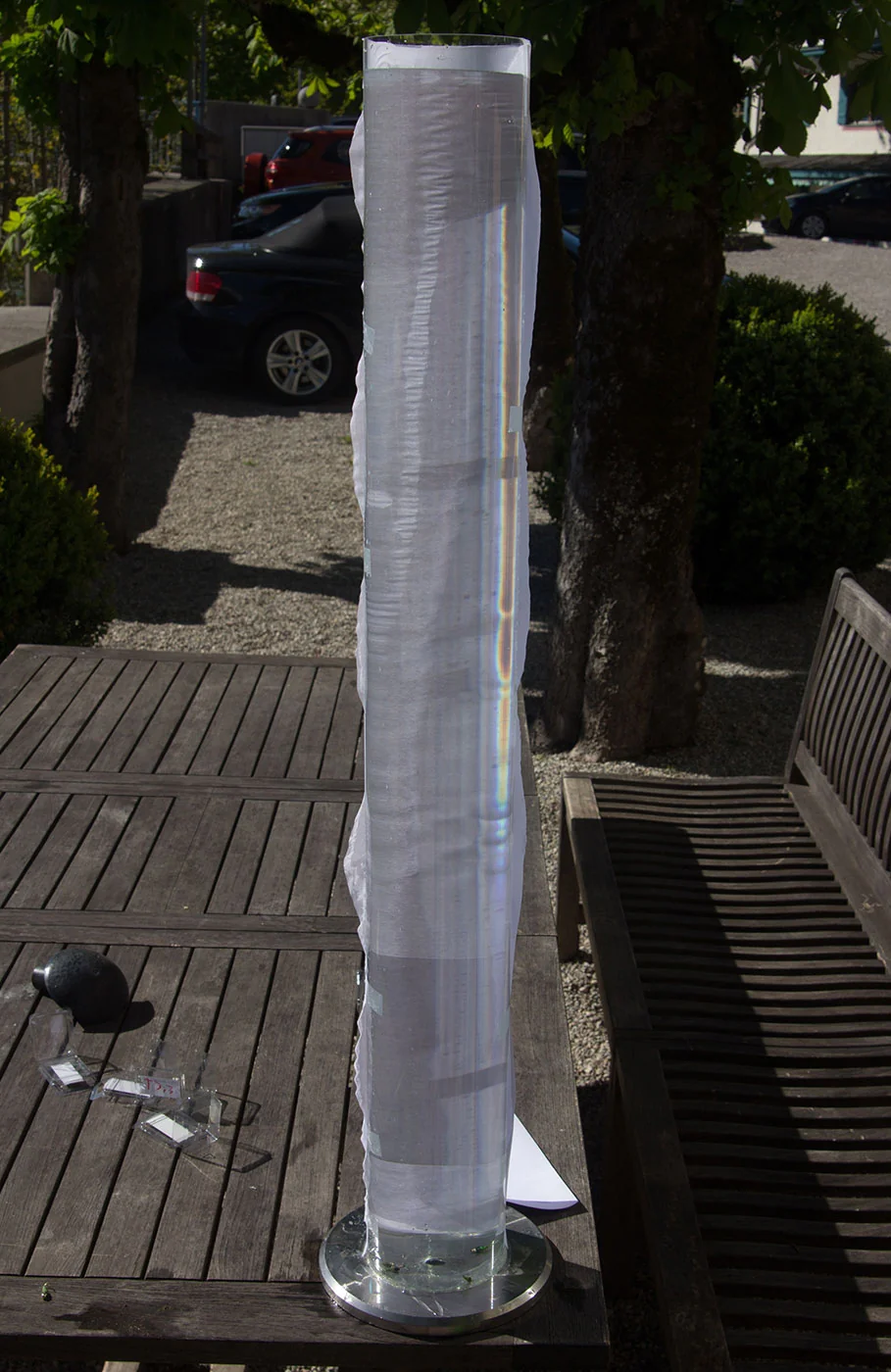
To document this in detail, we did a Nymph-Sink comparison test for you.
Olive mayfly nymph was tied to a TMC 3761 # 12 for the comparative test. For this purpose, the same materials were used in each case. Only the weights were varied. The sinking distance was exactly one meter in a water-filled downpipe (see photo experiment setup)
Folgende Sinkzeiten wurden gemessen:
Olive mayfly nymph
– with gold head brass bead –> Ø 3.2 mm 2.43 seconds
– with tungsten standard pearl –> Ø 3.3 mm 2.00 seconds
– with Tungsten Slotted Bead –> Ø 3.3 mm 1.20 seconds
– "Trout Trap" Version –> Ø 3.3 mm 0.93 seconds
Conclusion Nymph sink comparison test:
In our sinking test, we showed that a Trout Trap nymph sinks twice as fast as a nymph with a standard Tungsten bead. For a descent distance of 1 meter, the Tungsten Trout Trap Nymph needed 0.93 seconds to reach the bottom, whereas the identical nymph with a standard tungsten bead needed exactly 2 seconds. (Of course, these measurements are idealized, as they were measured in a water-filled downpipe without flow - they are almost laboratory conditions.)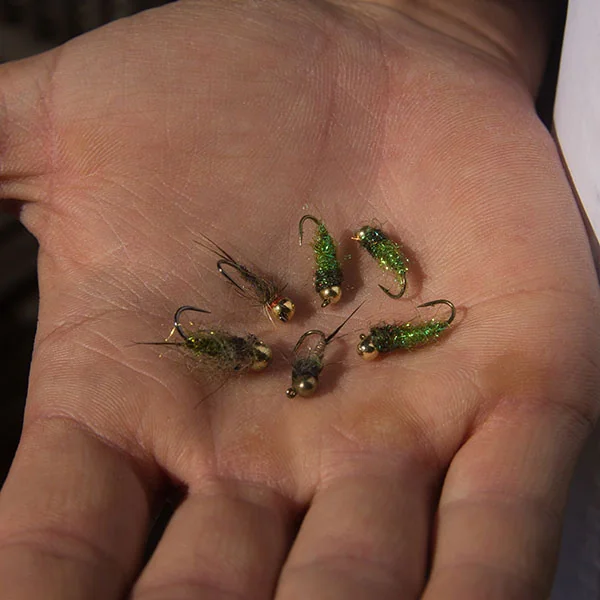
Meaning for the practice:
Basically, it is logical that a bead with a bigger diameter has a higher weight and therefore sinks faster. However, there are many other factors such as currents, body volume of the nymph, rigidity and length of the leader and also the position of the strike indicator on the leader. Of course, one of the most important factors is the depth of the water to be fished.In combination, all of these factors are crucial as to whether the nymph imitation really makes it to the bottom of the water and shows its hoped-for effect. If the nymph is not presented natural, the fish often refuse the to take it.
Benefits of the Trout Trap Nymphs
Sinking behavior / sinking speed
As seen in the above test, Trout Trap nymphs sink significantly faster than comparable standard nymphs.
Up-Side Down: Minimized hanging hazard & Hake properties
Due to the design of the nymph it is achieved that it moves "up-side-down" - with the tip of the hook upwards - through the water. This gives rise to two advantages which are very important in the fishery. On the one hand, you will get significantly less snags in the basic fishing, because the tip of the hook does not scratch over the bottom and get hooked there. On the other hand, the hooking properties of the nymph with the hook bow pointing upwards are outstanding.
Fish Gentle
Another highly positive aspect is that trout trap patterns tend to allow smaller nymph patterns to be fished at great depths. That it is unnecessary to fish with a # 8 lead head hook. These old, totally outdated hooks hurt the fish strongly and are cruel to throw on a 5 weight rod. A small hook causes much smaller injuries.
Quality & Pattern
The Trout Trap Nymphs invented and commissioned by us undergo meticulous quality control. They are robust and durable and made from the best materials. In addition, they are tied on the best premium Tiemco hooks. All Trout Trap patterns are tied in natural colors and proven and tested thousands of times.
In summary, the advantages of the Trout Trap nymphs are the sinking behavior, the sinking speed, the up-side-down swimming behavior and the smaller hook sizes, which ensure extremely good hooking properties.
We can only recommend you to test the Trout Trap Nymphs on your body of water!
We wish you at lot of Petri Heil (good fishing)!
Recommendation
Which bead size fits which hook size?
| Bead Ø mm | Hook size |
| 2 | 16 bis 20 |
| 2,3 | 14 bis 18 |
| 2,8 | 12 bis 16 |
| 3,3 | 10 bis 14 |
| 3,8 | 8 bis 12 |
| 4,6 | 6 bis 12 |
| 5,5 | 4 bis 8 |
Tip:
Of course you can also choose a bead thats either bigger or smaller, so that your fly sinks even faster or slower.
Comparison chart:
| Messing-Perlen | Tungsten Standard & Slotted | Off Bead Perlen | ||||
| Perlen Ø | Gewicht pro Goldkopf-Perle (Messing) | Perlen Ø | Gewicht Tungsten Perle Standard | Gewicht Tungsten Perlen Slotted | Perlen Ø | Tungsten Off Bead Perlen für Trout Traps |
| 2,3 | 0,11 g | |||||
| 2,7 | 0,07 g | 2,8 | 0,15 g | 0,19 g | 2,8 | 0,18 g |
| 3,2 | 0,11 g | 3,3 | 0,24 g | 0,31 g | 3,3 | 0,31 g |
| 3,8 | 0,19 g | 3,8 | 0,42 g | 0,47 g | 4 | 0,53 g |
| 4,5 | 0,28 g | 4,6 | 0,69 g | 0,76 g | 4,6 | 0,80 g |
| 5,5 | 1,16 g | 1,29 g | 5,5 | 1,38 g | ||
| 6,5 | 2,17g | |||||
Trout Trap Caddis (rust/golden)
Drop Nymph Peeping Caddis
Trout Trap Master Set

